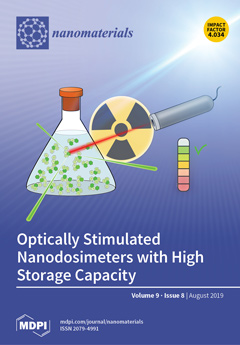Nano-TiO
2 has always been one of the most important topics in the research of photocatalysts due to its special activity and stability. However, it has always been difficult to obtain nano-TiO
2 with high dispersion, a small particle size and high photocatalytic activity. In this paper, nano-TiO
2 powder was prepared by combining the high-gravity technique and direct precipitation method in an impinging stream-rotating packed bed (IS-RPB) reactor followed by Fe
3+ in-situ doping. TiOSO
4 and NH
3·H
2O solutions were cut into very small liquid microelements by high-speed rotating packing, and the mass transfer and microscopic mixing of the nucleation and growth processes of nano-TiO
2 were strengthened in IS-RPB, which was beneficial to the continuous production of high quality nano-TiO
2. Pure TiO
2 and iron-doped nano-TiO
2 (Fe-TiO
2) were obtained in IS-RPB and were investigated by means of X-ray diffraction (XRD), Raman, scanning electron microscopy (SEM), transmission electron microscopy (TEM), X-ray photoelectron spectroscopy (XPS), ultraviolet-visible diffuse reflectance spectroscopy (UV-vis DRS) and Brunauer–Emmett–Teller (BET) analysis, which found that pure TiO
2 had a particle size of about 12.5 nm, good dispersibility and a complete anatase crystal at the rotating speed of packing of 800 rpm and calcination temperature of 500 °C. The addition of Fe
3+ did not change the crystalline structure of TiO
2. Iron was highly dispersed in TiO
2 without the detection of aggregates and was found to exist in a positive trivalent form by XPS. With the increase of iron doping, the photoresponse range of TiO
2 to visible light was broadened from 3.06 eV to 2.26 eV. The degradation efficiency of gaseous toluene by Fe-TiO
2 under ultraviolet light was higher than that of pure TiO
2 and commercial P25 due to Fe
3+ effectively suppressing the recombination of TiO
2 electrons and holes; the highest efficiency produced by 1.0% Fe-TiO
2 was 95.7%.
Full article






